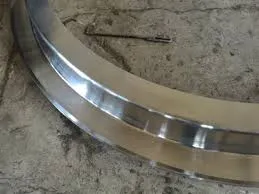- Afrikaans
- Albanian
- Amharic
- Arabic
- Armenian
- Azerbaijani
- Basque
- Belarusian
- Bengali
- Bosnian
- Bulgarian
- Catalan
- Cebuano
- China
- China (Taiwan)
- Corsican
- Croatian
- Czech
- Danish
- Dutch
- English
- Esperanto
- Estonian
- Finnish
- French
- Frisian
- Galician
- Georgian
- German
- Greek
- Gujarati
- Haitian Creole
- hausa
- hawaiian
- Hebrew
- Hindi
- Miao
- Hungarian
- Icelandic
- igbo
- Indonesian
- irish
- Italian
- Japanese
- Javanese
- Kannada
- kazakh
- Khmer
- Rwandese
- Korean
- Kurdish
- Kyrgyz
- Lao
- Latin
- Latvian
- Lithuanian
- Luxembourgish
- Macedonian
- Malgashi
- Malay
- Malayalam
- Maltese
- Maori
- Marathi
- Mongolian
- Myanmar
- Nepali
- Norwegian
- Norwegian
- Occitan
- Pashto
- Persian
- Polish
- Portuguese
- Punjabi
- Romanian
- Russian
- Samoan
- Scottish Gaelic
- Serbian
- Sesotho
- Shona
- Sindhi
- Sinhala
- Slovak
- Slovenian
- Somali
- Spanish
- Sundanese
- Swahili
- Swedish
- Tagalog
- Tajik
- Tamil
- Tatar
- Telugu
- Thai
- Turkish
- Turkmen
- Ukrainian
- Urdu
- Uighur
- Uzbek
- Vietnamese
- Welsh
- Bantu
- Yiddish
- Yoruba
- Zulu
Aug . 09, 2024 01:40 Back to list
Achieving Superior Quality in Sand Castings for Enhanced Performance and Durability in Manufacturing Processes
The Importance of High-Quality Sand Castings in Modern Manufacturing
Sand casting, one of the oldest metal-forming techniques, remains an essential process in the manufacturing industry today. Known for its versatility and cost-effectiveness, sand casting is often employed to create complex shapes and large parts that are difficult to achieve through other methods. However, the quality of the sand castings produced can significantly affect the performance, lifespan, and overall success of the final product. This article explores the importance of high-quality sand castings and their impact on the manufacturing sector.
Understanding Sand Casting
Sand casting involves creating a mold using sand, which is then filled with molten metal to form a part. The process begins with a pattern, usually made from metal or a similar material, which is used to create the mold cavity in the sand. The sand mixture is typically a blend of silica sand, clay, and water, which gives it the properties necessary to hold its shape during the casting process. Once the molten metal is poured into the mold and solidifies, the sand is broken away, leaving behind the finished casting.
The Role of Quality in Sand Castings
Quality in sand casting can be defined by several factors, including dimensional accuracy, surface finish, material integrity, and mechanical properties. High-quality sand castings are essential for ensuring that components meet the stringent specifications required in various industries, including automotive, aerospace, and heavy machinery.
1. Dimensional Accuracy Precision is critical in manufacturing. High-quality sand castings provide exact dimensions, reducing the need for extensive machining and post-processing, which can add to production costs and time.
2. Surface Finish The surface finish of a casting directly influences its performance. Castings with rough surfaces can cause issues in assembly, lead to wear over time, and affect aesthetic aspects of the final product. Quality sand castings exhibit smoother surfaces, which enhances both functionality and appearance.
high quality sand castings

3. Material Integrity Impurities or defects in the metal can lead to failures in the final product. Quality control measures during the casting process help to ensure that the metal is free from defects, such as voids, shrinkage, and inclusions, critical for maintaining the strength and reliability of components.
4. Mechanical Properties High-quality castings are critical for parts that must withstand extreme conditions, such as high loads or temperatures. The mechanical properties, such as tensile strength and ductility, must meet or exceed industry standards to ensure functionality and safety.
The Impact of High-Quality Sand Castings on Industries
In industries like automotive and aerospace, the demand for high-quality components is paramount. A single faulty part can lead to catastrophic failures, financial losses, and compromised safety. Companies recognize that investing in high-quality sand casting leads to durable, reliable components, which translates to better performance, lower maintenance costs, and improved customer satisfaction.
Moreover, as technological advancements continue to reshape the manufacturing landscape, the integration of computer-aided design (CAD) and simulation software has allowed manufacturers to optimize their sand casting processes. This results in improved mold design, better material selection, and the ability to anticipate and mitigate potential defects, thereby enhancing the overall quality of castings produced.
Conclusion
In summary, high-quality sand castings play a pivotal role in modern manufacturing, influencing both the performance of the final product and the success of the manufacturing process itself. As industries continue to evolve and demand more complex, reliable components, the importance of investing in quality materials, processes, and technologies cannot be overstated. From achieving precise dimensions to ensuring material integrity, high-quality sand castings are essential for meeting the challenges of today’s demanding manufacturing environments.
-
8mm Thin-Walled Cast Steel Manhole Cover Pallet Bottom Ring | Durable
NewsAug.04,2025
-
Premium Cast Iron Water Main Pipe: Durable, Corrosion-Resistant
NewsAug.03,2025
-
Durable Cast Iron Water Mains | AI-Optimized Systems
NewsAug.02,2025
-
High-Efficiency Propane Boiler for Baseboard Heat | Save Energy
NewsAug.01,2025
-
Premium Source Suppliers for Various Gray Iron Castings
NewsJul.31,2025
-
Durable Cast Iron Water Main Pipes | Long-Lasting
NewsJul.31,2025


